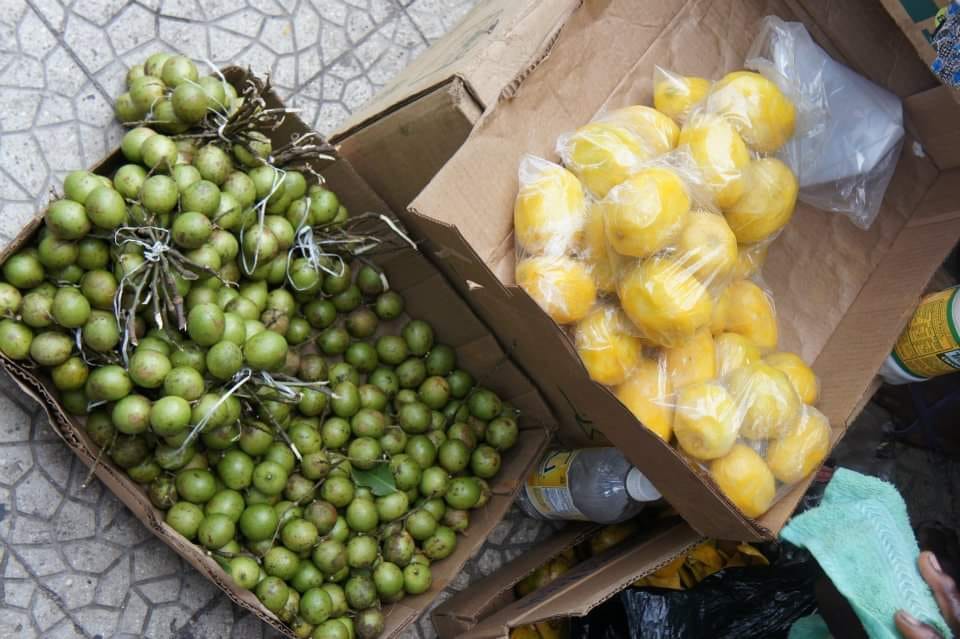
The June plum, scientifically known as Spondias dulcis (syn. Spondias cytherea), is a tropical tree that produces edible fruit with a distinctive fibrous pit. This fruit, cherished in many regions of the world, goes by several names: golden apple in the English-speaking Caribbean, pommecythere or cythere in other parts of the Caribbean, and vī in Polynesia. Brought to Jamaica in 1782, the June plum has since become a beloved staple, especially among children.

Description of the June Plum Tree
The June plum tree is fast-growing and can reach up to 20 meters (66 feet) in its native Melanesia and Polynesia. However, in other areas, it typically averages between 10 to 12 meters (30 to 40 feet). The tree features deciduous, pinnate leaves that range from 20 to 60 cm (8 to 24 inches) in length, consisting of 9 to 25 glossy, elliptic, or obovate-oblong leaflets, each about 9 to 10 cm (3.5 to 3.9 inches) long with finely toothed edges towards the apex. The tree produces small, inconspicuous white flowers in terminal panicles. Its oval fruits, measuring 6 to 9 cm (2.4 to 3.5 inches) long, grow in clusters of 12 or more on a long stalk. Initially green and hard, the fruits turn golden-yellow as they ripen, often falling to the ground in this process.

Habitat and Cultivation
Originally from Melanesia and Polynesia, Spondias dulcis has been introduced to tropical regions worldwide. Besides Jamaica, it is cultivated in Panama, Cuba, Haiti, the Dominican Republic, Puerto Rico, Suriname, Brazil, Grenada, Trinidad and Tobago, Barbados, St. Lucia, and eastern Sucre in Venezuela. Although it was introduced to the United States in 1909, it did not become a popular crop there but is grown in South Florida up to Palm Beach County. The fruit is also widely grown in Somalia, likely introduced during the colonial era.

Nutritional Benefits and Uses
The June plum is a nutritional powerhouse, rich in vitamins B, C, and A. It is most commonly consumed as food, and its uses vary across different cultures:
- Raw Consumption: The flesh of the June plum is crunchy and slightly sour when raw. It is best enjoyed when fully colored but still somewhat crunchy, offering a pineapple-mango flavor with a hint of tartness.
- Culinary Uses: In Indonesia and Malaysia, the fruit is eaten with shrimp paste or used in rujak (Indonesia) and rojak (Malaysia). It is made into preserves, sauces, soups, and stews in various countries. In Fiji, it is made into jam, and in Samoa and Tonga, it is used to make otai. In Sri Lanka, the fruit is pickled in vinegar with chili and spices to make acharu.
- Juices and Drinks: The juice is called kedondong in Indonesia, amra in Malaysia, and balonglong in Singapore. In Jamaica, the fruit is made into a refreshing drink sweetened with sugar and spiced with ginger.

Health Benefits
The June plum offers numerous health benefits:
- Immune Boosting: High in vitamin C, the fruit helps produce white blood cells, improving the body's defense against diseases. It also aids in collagen formation and accelerates wound healing.
- Skin and Tissue Repair: The vitamin C content in June plums is excellent for tissue repair and skincare, enhancing collagen production and nourishing the skin.
- Respiratory Health: The fruit is beneficial for respiratory ailments due to its antibiotic properties. For a persistent cough, grated June plum with a pinch of salt or boiled leaves sweetened with honey can be effective remedies.
- Vision Improvement: The vitamin A in June plums helps improve vision.
- Digestive Health: The dietary fiber in the fruit aids digestion and bowel movement, while its high water content prevents dehydration. Boiling the bark can treat diarrhea.

Culinary Traditions in Jamaica
In Jamaica, the June plum is a seasonal fruit with the highest harvest during October and November, with the tree flowering around the beginning of June. The fruit can be enjoyed at various stages of maturity:
- Green June Plum: Eaten with salt and black pepper.
- Ripe June Plum: Mostly eaten raw, but sometimes stewed with spices and sugar to make a delicious dessert.
- June Plum Drink: Blended to make a refreshing juice.

Jamaicans have fond memories of enjoying June plums straight from the tree, often licking the juice off their wrists to avoid wasting even a drop. The fruit's sweet-tangy flavor, a mix of cherries, mangoes, pineapples, and star fruit, makes it a favorite among children. The June plum is also used in jams, chutneys, sauces, and even paired with meat and seafood in various culinary preparations.

Conclusion
The June plum, also known as Jew Plum, Ambarella, Golden Apple, Hog Plum, or Yellow Egg, is a versatile and beloved fruit in Jamaica. Its rich nutritional profile and diverse culinary uses make it a staple in many households. Whether eaten raw, cooked, or turned into a refreshing drink, the June plum continues to be a cherished fruit, holding a special place in the hearts of Jamaicans and contributing to their rich culinary traditions.
